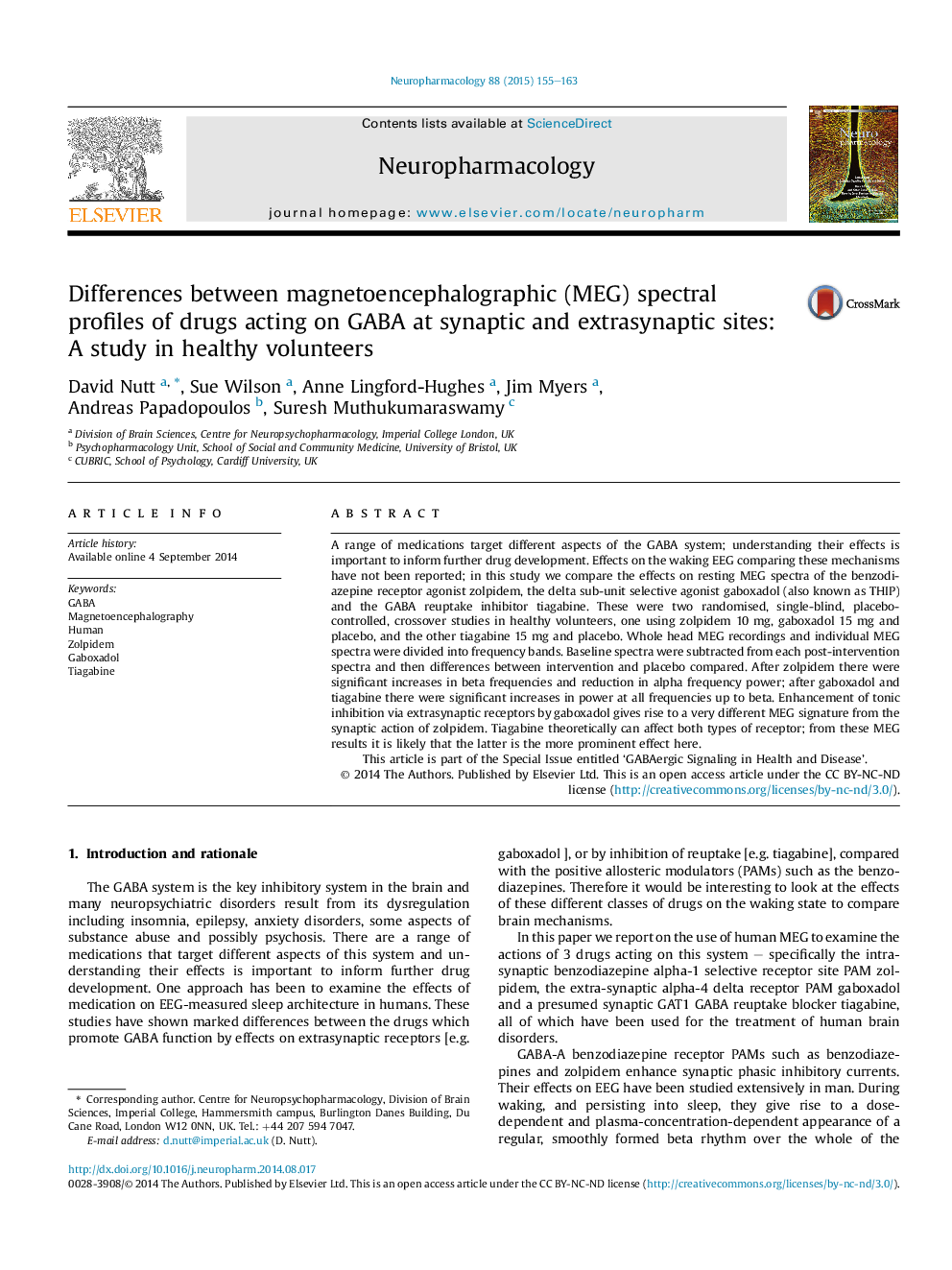| Article ID | Journal | Published Year | Pages | File Type |
|---|---|---|---|---|
| 5814139 | Neuropharmacology | 2015 | 9 Pages |
â¢We compared the effects on human resting MEG spectra of zolpidem, gaboxadol and tiagabine.â¢Zolpidem gave rise to significant increases in beta frequencies and reduction in alpha frequency power.â¢For gaboxadol and tiagabine there were significant increases in power at all frequencies up to beta.â¢The enhancement of tonic inhibition via extrasynaptic receptors by gaboxadol, and uptake blockade by tiagabine produce a different MEG signature from the synaptic action of zolpidem.
A range of medications target different aspects of the GABA system; understanding their effects is important to inform further drug development. Effects on the waking EEG comparing these mechanisms have not been reported; in this study we compare the effects on resting MEG spectra of the benzodiazepine receptor agonist zolpidem, the delta sub-unit selective agonist gaboxadol (also known as THIP) and the GABA reuptake inhibitor tiagabine. These were two randomised, single-blind, placebo-controlled, crossover studies in healthy volunteers, one using zolpidem 10Â mg, gaboxadol 15Â mg and placebo, and the other tiagabine 15Â mg and placebo. Whole head MEG recordings and individual MEG spectra were divided into frequency bands. Baseline spectra were subtracted from each post-intervention spectra and then differences between intervention and placebo compared. After zolpidem there were significant increases in beta frequencies and reduction in alpha frequency power; after gaboxadol and tiagabine there were significant increases in power at all frequencies up to beta. Enhancement of tonic inhibition via extrasynaptic receptors by gaboxadol gives rise to a very different MEG signature from the synaptic action of zolpidem. Tiagabine theoretically can affect both types of receptor; from these MEG results it is likely that the latter is the more prominent effect here.This article is part of the Special Issue entitled 'GABAergic Signaling in Health and Disease'.
